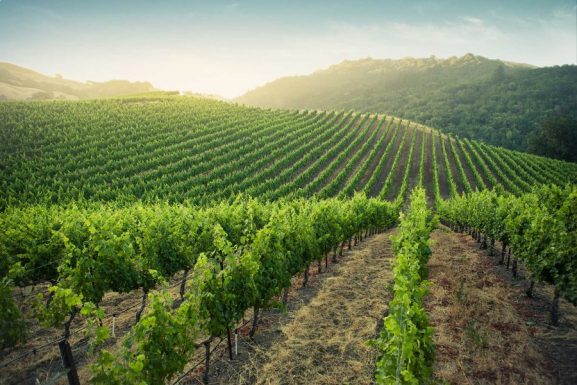Top 10 most important things to know about wine
We all know that wine has therapeutic properties and that it was once called the drink of the gods, but there are things we do not know or know only in part. And as the saying goes, “In vino veritas” – how about learning as much as you can about one of the most popular drinks of all time?
You really do not have to be a complete wine connoisseur to make the best choice, but you can not overlook some essential information. To recognize a quality wine, you need to know as much as you can about the grape variety, the varietals, and the difference between wine types.
Here are 10 of the most important things you should know about wines, especially if you want to give them as gifts:
1. What are the most popular types of wine?
There are a whole range of criteria by which wines are categorized, from the most obvious (color, taste, smell) to those that make us talk about the nobility of a wine (age, rare varieties). Depending on the color, the wines can be red, white or rosé.
Red wine is obtained from grape varieties such as: Merlot, Cabernet Sauvignon, Pinot Noir, Shiraz, Malbec. White wine is made from grape varieties such as: Chardonnay, Riesling, Sauvignon Blanc, Muscat Ottonel. Rosé wine is made from red grape varieties. These wines are made from must that is only very briefly in contact with the grape skin, which gives each wine variety its color.
Cabernet Sauvignon is the most popular wine variety in the world.
2. Sweet or dry wine, what is the difference?
When we talk about the taste of wine, we refer primarily to the amount of sugar it contains, which leads to such a classification. Residual sugars are the amounts of sugar that remain in the wine after fermentation and conversion of sugar into alcohol. dry – with a sugar content of up to 4 g/l semidry – with a sugar content between 4 and 12 g/l semi-sweet – with a sugar content between 12 and 50 g/l sweet – with a sugar content of more than 50 g/l
3. How can a wine taste sweet without sugar?
In the world of wine, the origin of the grapes is of enormous importance. How is it that a dry wine (i.e. without residual sugar) can taste sweeter than other wines? There are several factors that influence this process, including the grape variety, the region, and the age of the oak barrel. For example, if you compare a Malbec from France to a Malbec from Argentina, the latter will taste sweeter. The region where the grapes grow has a great influence on the sweetness of the wine.
4. What are the most popular wine regions?
If we know that Italy, France and Spain are the three largest wine producers in the world, it tells us three things: 1. They produce most of the world’s wine. 2. they produce some of the best wines in the world. 3. France, Italy and Spain are the source of the world’s most popular grape varieties.
6. Which is the healthiest wine?
Red wine has long attracted the attention of researchers due to its antioxidant properties. Consumed in moderation, red wine comes with many health benefits because it contains a certain type of antioxidants that have a beneficial effect on the immune system. The main active ingredient of red wine, resveratrol, decreases the risk of cell aging and fights other negative effects of free radicals.
7. At what temperature is the wine served?
The correct serving temperature of wine is very important if you want to enjoy its full flavor. Dry white wines with low alcohol volume, rose wines and sparkling wines are consumed at a temperature of 5-10 degrees Celsius. This temperature helps them retain their freshness and flavor. White wines with high alcohol content and fruity red wines with lower alcohol content are served at temperatures between 10 and 15 degrees Celsius. High-alcohol red wines and Port wines should be consumed at a temperature between 15 and 18 degrees Celsius – slightly cooler than ambient but warmer than cellar temperatures. No wine should be served at a temperature higher than 20 degrees Celsius.
8. In what glasses is the wine served?
You must have wondered why there are several types of glasses? Learn that each type of wine or drink requires a specific type of glass. It’s not just a question of aesthetics or the recommended serving size, it’s also about how the flavors feel. Thus, only with the right glass can a wine show its true value. Red wine is served in tall, wide-bellied glasses, but it will only fill to the bottom, to the area where the diameter of the glass is larger (about halfway). The choice is designed so that the wine has as much contact with oxygen as possible, an element that enhances its aroma.
White wine glasses also have a stem and a tulip shape, with the neck slightly narrower than the belly and a cup less wide than that of red wine glasses. The size is smaller than red wine glasses because white wines are meant to be served at a lower temperature and do not need to warm up in the glass. Their height is more than 20 cm, the capacity is about 350 ml, and they must be held by the leg so that the wine does not heat up.
9. What is the difference between flavor and bouquet?
The smells of young wines are called aromas, and those of mature ones that give a stronger and more pungent note are called bouquets.
10. How is wine stored?
Wine is said to be a living drink, changing its taste and texture over time. In order to enjoy its authentic aroma, you need to provide it with optimal conditions. Whether you’re a wine lover with a few bottles or an aficionado with a large collection, you surely want to know how you can ensure that your drink will retain its color, taste and texture over time. Wine keeps well at a temperature between 7 and 18 degrees Celsius, closer to the lower level for white and rosé wines and closer to the upper level for red wines.



